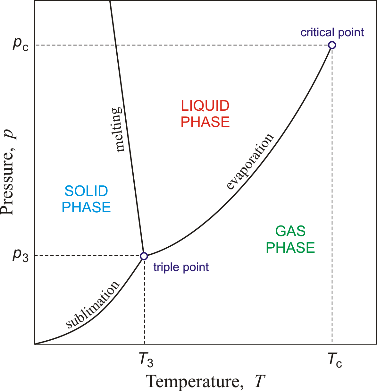In thermodynamics, the triple point of a substance is when the three phases known as solid, liquid, and gas co-exist in equilibrium at a certain point of temperature and pressure. The term “triple point” was given by James Thomson in 1873. There are many substances that have these conditions such as water, hydrogen, carbon dioxide, oxygen, and many more. For example, a triple point of water occurs exactly when its pressure and temperature are 0.611kPa and 273.16K (0.01OC) respectively. It is possible to change water’s state of matter to ice, liquid, and vapour at the same time by making a really tiny, small change in pressure and temperature.
This happens when the gas molecules are being vacuumed out from the space above the surface of the liquid and this causes changes in equilibrium. By changing the equilibrium, the system will try to restore the equilibrium back by conserving the energy and causing the liquid to turn solid. However, it will start to boil by taking the heat from the environment and this causes the cycle to repeat.
















